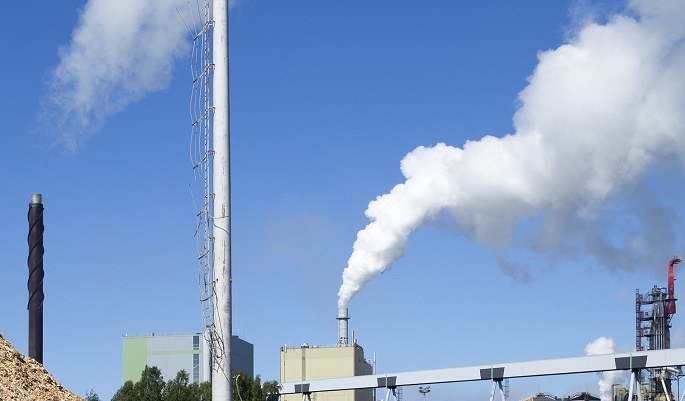CO2 use, removal present opportunities for Finland: Report
Published : 30 Mar 2023, 01:53
Carbon dioxide capture, use and storage technologies offer significant opportunities for Finland when it comes to both achieving the carbon neutrality target and creating new business, according to a new report drawn up for the Government by VTT Technical Research Centre of Finland Ltd, the Finnish Environment Institute and Tyrsky Consulting.
However, stronger national guidance, a clearer regulatory environment and measures to ensure sustainability are needed for the deployment of solutions, said a government press release on Wednesday, quoting the report.
The ‘Carbon dioxide use and removal: prospects and policies’ report examines the current status of carbon capture, utilisation and storage (CCUS) and carbon dioxide removal (CDR) and the related prospects, especially from the perspective of Finland.
The report takes into account the state of technological development, key technology demonstrations, commercial projects, market outlooks and policies affecting the deployment of technologies in the European Union and in Finland.
Technological sinks refer to technology-based carbon removal solutions. A technological sink is generated when carbon dioxide is captured directly from the atmosphere, indirectly from oceans or through biomass growth, after which it is stored permanently.
The total quantity of carbon dioxide removed and permanently stored must be greater than the total emissions generated by the process. The use of carbon dioxide in short-lifetime products such as fuels can help reduce emissions by replacing fossil-based raw materials, but it does not remove carbon dioxide from the atmosphere.
In Finland, the majority of carbon dioxide emissions from industry are biogenic. These emissions are generated by the forest industry and by power plants, including waste-to-energy stations. Significant sources of fossil-based emissions include oil refineries, steel production, cement production and the chemical industry.
According to the report, these point sources, which account for 40 million tonnes of CO2 emissions in Finland, present an interesting opportunity for developing and deploying carbon capture technologies. Carbon removal solutions are particularly interesting for Finland as they present an opportunity to compensate in part for the decline in forest carbon sinks detected in recent years. However, promoting carbon removal technologies does not eliminate the need to improve sustainability in the land use sector.
Carbon dioxide can be stored permanently in geological formations, such as saline aquifers at a depth of around one kilometre, or by binding it to minerals. Based on a survey of commercial projects, the geological storage of bio-based carbon dioxide is the most viable option for fast, large-scale deployment of technological sinks in Finland over the medium term.
This solution would involve transporting CO2 on ships from Finland to the nearest storage sites, most of which are located in the North Sea and the Norwegian Sea, but which have also been identified closer by in the southern Baltic Sea. When it comes to large-scale deployment, storage technologies based on mineralisation are currently at a lower level of maturity, but in the future, methods utilising mining waste could be used to store millions of tonnes of carbon dioxide in Finland.
Biomass side streams from Finnish industry also show significant potential for biochar production. In fact, new commercial operators have already emerged around this technology in Finland. A downside to biochar production is that it has to compete with other uses of side streams.
The capture and storage of CO2 originating from fossil carbon, which is included in the EU Emissions Trading System (ETS), is governed by different legislation than solutions for removing biogenic CO2. For the latter, there is no direct incentive in the EU similar to the emission allowance price in the ETS; instead, commercial solutions have so far been based on the voluntary carbon market.
As the market situation is uncertain, investments in carbon dioxide removal have not yet reached the required scale of millions of tonnes per year.
However, within the framework of EU legislation and national guidelines, technological sinks can already be partially taken into account when calculating the greenhouse gas emissions balance of the effort sharing sector. These methods thus create an indirect national incentive as a result of emission obligations in the effort sharing sector, and they may contribute significantly to achieving Finland’s carbon neutrality target.
In the report’s conclusions, the researchers recommend that the EU clarify its targets for the deployment of carbon dioxide removal solutions and determine how the targets should be achieved and what role EU and national-level policies should play in achieving them.
The report identifies several policy instruments that Finland could use to accelerate the deployment of carbon use and removal technologies. Policy recommendations include drawing up a separate strategy on carbon use and removal, recognising carbon dioxide removal targets in the Climate Act and establishing a roundtable on carbon dioxide use and removal to bring together stakeholders in the sector. Furthermore, a dedicated funding programme should be introduced to support the full RDI chain of carbon dioxide removal solutions, from research to piloting. The research team also recommends conducting a study on financial incentives to promote the deployment of carbon dioxide removal solutions.


